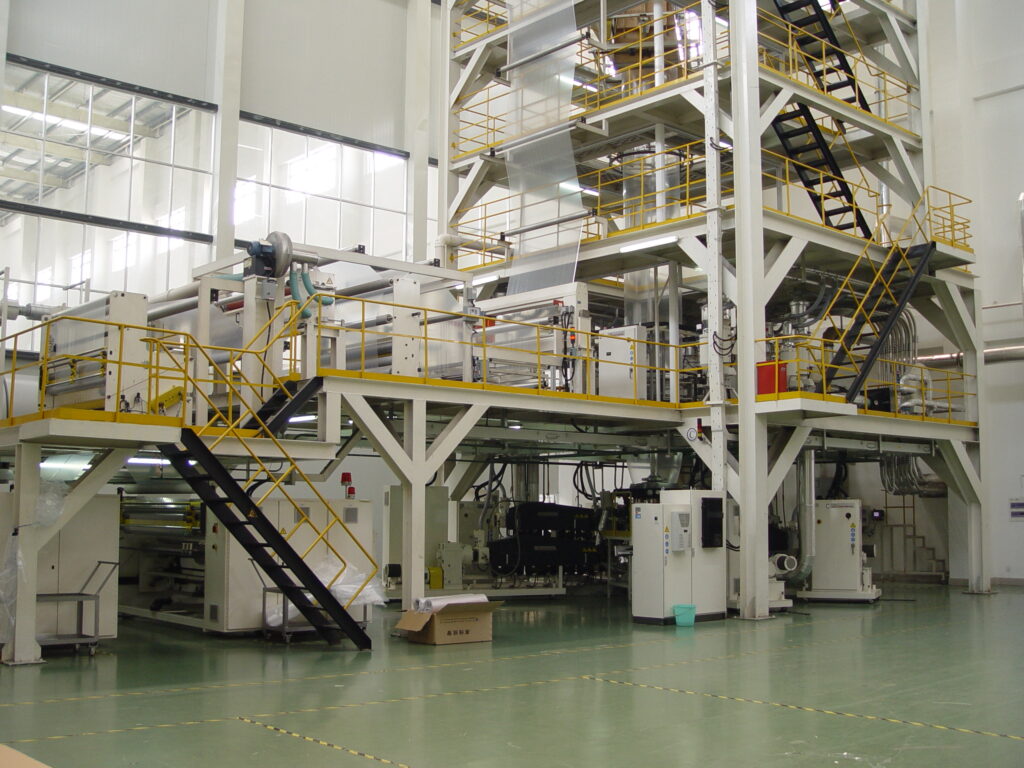As discussed in another blog, there are 2 ways to manufacture plastic vacuum bags:
- Extrusion
- Lamination
Laminated vacuum sealing bags are made by gluing different sheets of plastic on top of each other.
Extruded vacuum sealing bags are made from film, manufactured by large extruders. Pellets of plastic are melted in this extruder and then blown up in to a bubble. The film will be cooled down and then cut into rolls of film. Normally, 20% of the pellets are barrier material, making these bags into vacuum sealing bags. Air cannot escape through these vacuum bags, therefore they can retain a vacuum.
In this extruder, the thickness (or micron) of the film is determined. 1000 micron = 1 mm. The most common micron of vacuum sealing bags is 70. Pac Food stocks 70, 100 and 120 micron vacuum sealing bags, but can our partners can blow any micron.
The extruders used to blow film for vacuum sealing bags are made in Canada or Germany. These extruders are very expensive and there are only 2 main factories in the world who make them. Therefore the quality of the film is pretty consistent.
After the extruder, the film goes to bag making machines, where the film is cut and sealed into bags. This process takes a lot of precision and preparation. It is important is that the heat sealing bars are hot, so the bags are well sealed!
From here, the vacuum sealer bags are packed per 100 pieces in a poly bag and then packed in inner and outer cartons. Pac Food has chosen to use inner carton and outer cartons to make sure your purchase will be received intact by you. We label each 100 pcs pack, inner carton and outer carton. Labels have the kg’s and barcodes.
We hope this has clarified the process of making vacuum bags for you. Should you have more questions, please contact us!
Thank you.

